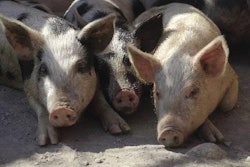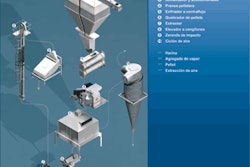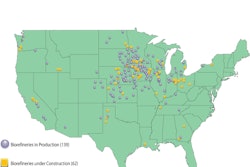The U.S. broiler and turkey processors are facing one of the most challenging landscapes imaginable this summer. Record high grain and energy prices coupled with chicken and turkey prices that are not anywhere near record-high levels give a recipe for tough times. With help from WATT's research department, WATT PoultryUSA readers who work for broiler and turkey processing companies were asked questions about the challenges they currently face and the promising products and technologies that they have seen or heard about. The surveys were tailored to the job functions of the survey respondents. This approach kept this online survey short and to the point, and nearly 150 individuals working in the broiler and turkey industries responded.
Top challenges
Survey respondents who work in broiler and turkey slaughter plants were asked to rank their challenges with one being the toughest and 10 being the easiest. It is no surprise that "high grain prices" topped the list at 1.25. Labor issues came next with "training employees" and "availability of labor" rated at 3.92 and 4, respectively. "Availability of capital" ranked as the fourth biggest challenge with a rating of 4.09. Somewhat surprisingly, "meeting the salmonella performance standard" ranked 10th on the list of 10 challenges with a rating of 6.5.
Poultry further processors responding to this survey ranked a list of 10 challenges in a similar manner as did those who work in slaughter plants. "High grain prices" topped the list at 3.8, followed by "labor availability" and "availability of capital" at 4 and 5, respectively. Developing new products was ranked 10th on the list of challenges at 6.5.
Promising Solutions
All survey respondents were asked to name the most promising product or process they had heard about recently. Sixty-nine respondents answered this open-ended question, and seven products or processes were named by more than one individual. Air-chilling carcasses, probiotics, feed enzymes and salmonella vaccines were each named by three individuals and led the list. Controlled atmosphere stunning or controlled atmosphere killing, pre-harvest salmonella reduction research at the University of Georgia, automated mechanical meat portioning and cellulosic ethanol production were each named by two survey respondents.
Production cutbacks
Survey respondents who identified their jobs as being in "corporate or administrative functions" for poultry processing companies were asked if bird placements had been lowered or had stayed the same. There were 36 responses to this question from broiler processors and 17 from turkey processors. Half of the broiler processing respondents reported no cutbacks in chick placements, and the average of all broiler responses was a 2.4 percent reduction.
Seventeen responses were given on the question about reductions in poult placements. Six respondents report no reduction in poult placements, and the average of all turkey respondents was a reduction of 2.8 percent in poult placements.
Pre-harvest salmonella control
Almost by default, salmonella control in many poultry operations has been left up to the processing plant. With the tightening of the salmonella performance standards this year, respondents working in live production were asked what steps their operations take to control salmonella in flocks on a pre-harvest basis. Thirteen of the 43 live production respondents (30.2 percent) said they do not employ any of the controls listed on the questionnaire. Twelve respondents (27.9 percent) report using killed autogenous salmonella vaccines on their breeders. Acidifying drinking water for pullets and feeding probiotics to breeders or meat birds were pre-harvest salmonella control measures employed by nine respondents (20.9 percent) each. Seven respondents (16.3 percent) each report acidifying the drinking water for meat birds for the entire life of the flock or acidifying the drinking water for meat bird flocks at placement and during feed withdrawal.

















